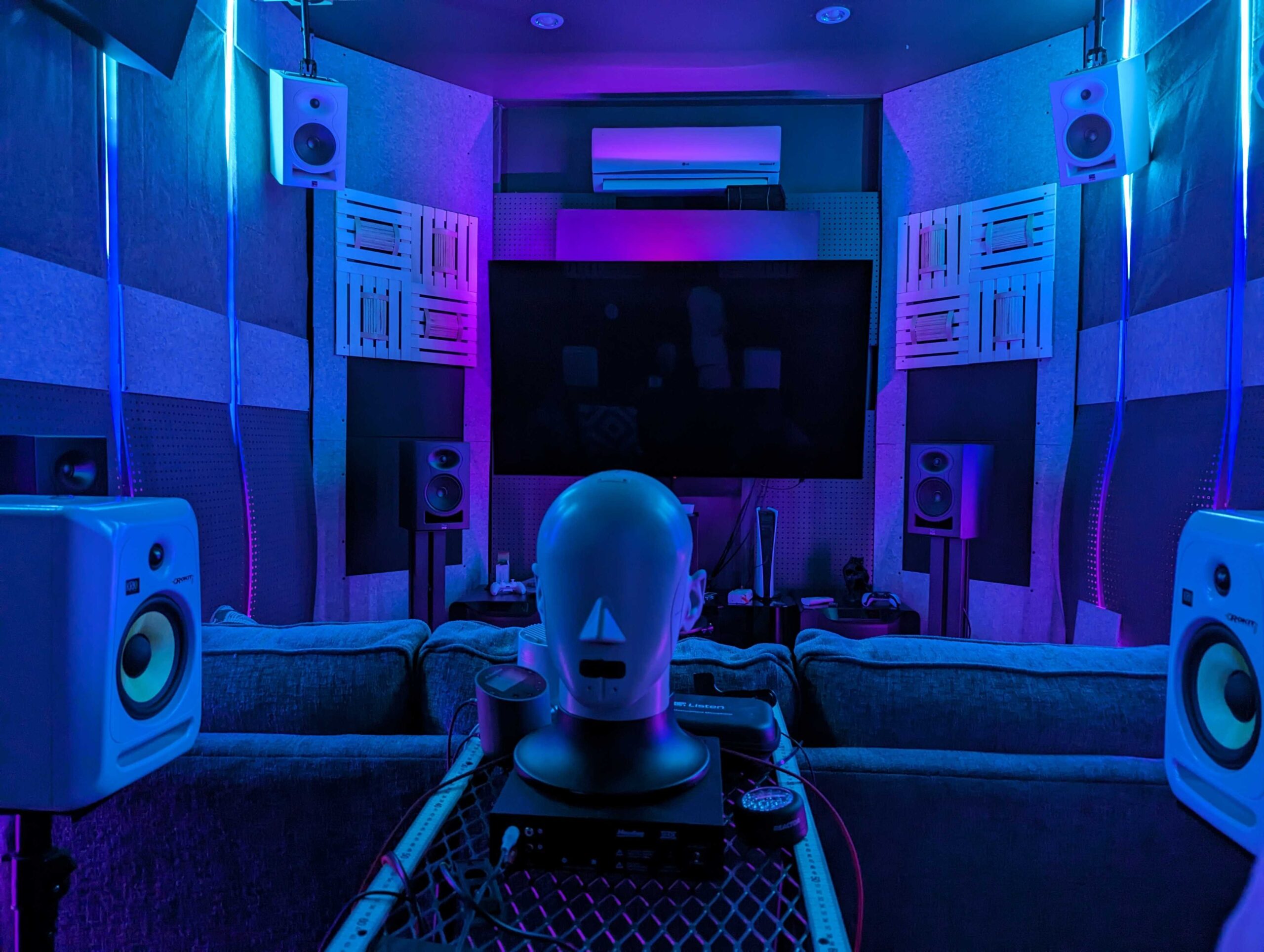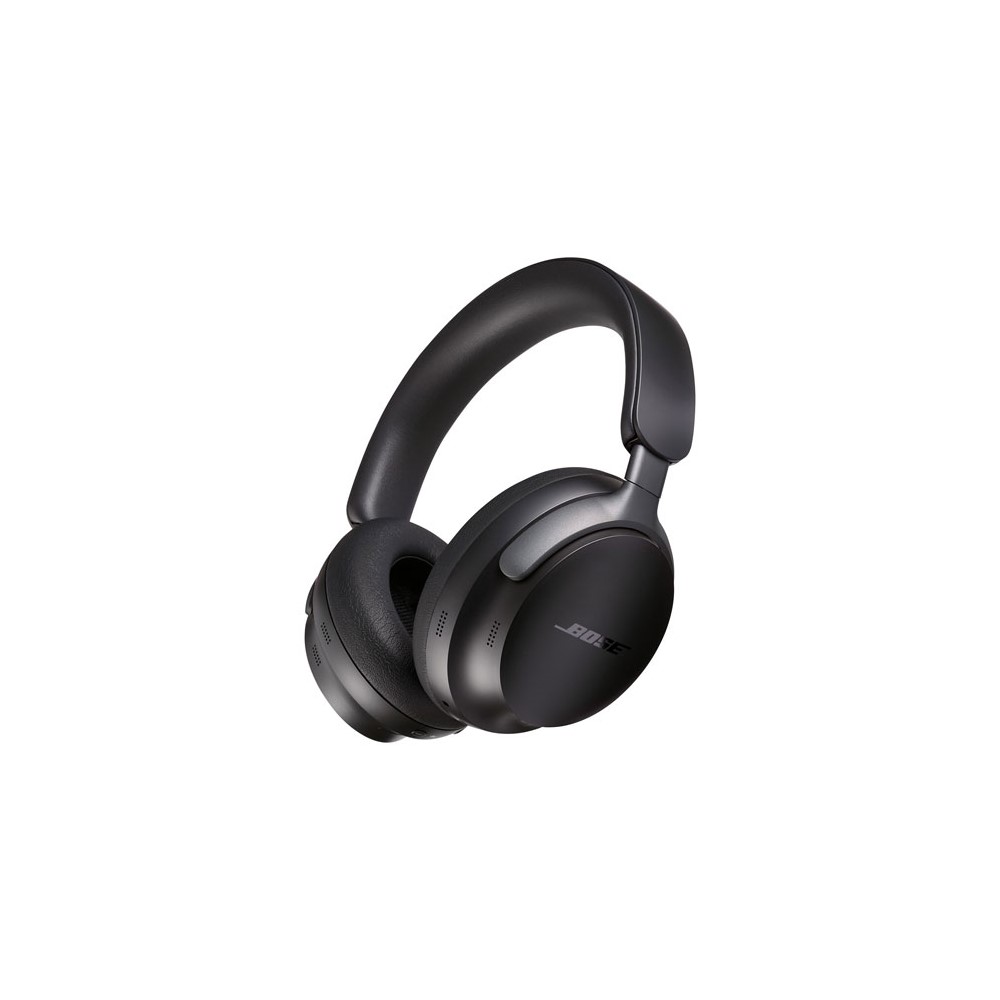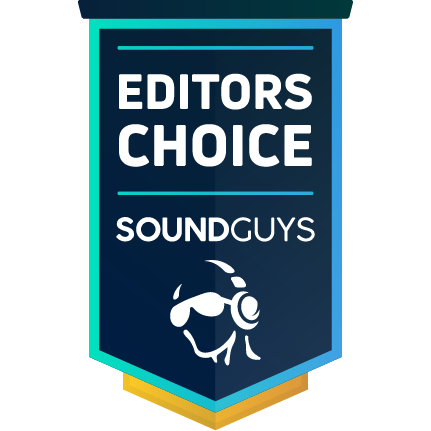All products featured are independently chosen by us. However, SoundGuys may receive a commission on orders placed through its retail links. See our ethics statement.
Best Headphones under $500
After hands-on testing, these are the headphones we’d actually recommend.
November 7, 2025
Adam is an Editor at SoundGuys specializing in gaming headsets, flagship headphones, and earbuds. A lifelong fan of video games and cinema, he brings a sharp ear and passion for immersive sound to every review. Beyond hardware, Adam writes thought-provoking features and opinion pieces that explore how audio tech shapes our lives. Armed with a BA in Cognitive Science, he pairs technical insight with a love for music’s psychological uplift. At home, he still rocks his original Sennheiser MOMENTUM over-ears, switches to Bose QuietComfort Ultra on flights, and relies on Galaxy Buds2 Pro while out and about.
Whether money’s no object or you just subscribe to the idea that spending big on headphones will pay off, there are a ton of different options in the high-end part of the audio market. Yes, many of them will be good, but not every pair of headphones at this price range are created equal. Some of these options will do better for specific needs than others.
We’ve tested hundreds of headphones in our lab, and below you’ll find our picks for the best headphones under $500 based on our reviews and extensive testing.
Each headphone receives a single overall headphone score, calculated from multiple testing data points: ANC, durability, isolation, value, design, connectivity, portability, battery life, features, and comfort.
Compare table
Filter
- Compare tableProductVotes
- 34 total votes34 total votes
$200
8.4
7.6
8.4
6.9
7.7
8.0
7.5
9.5
9.9
9.0
9.0
- 3 total votes3 total votes
$449
8.4
7.1
8.7
6.9
7.9
8.0
7.5
9.7
9.4
8.9
9.0
- 6 total votes6 total votes
$450
8.3
6.8
8.7
8.0
8.0
8.0
7.0
9.5
9.9
9.0
8.0
- 24 total votes24 total votes
$80
8.3
7.2
8.1
6.7
9.5
8.0
7.7
7.5
9.9
9.5
8.5
- 0 total votes0 total votes
$500
8.3
7.4
8.3
7.5
7.0
8.0
7.0
9.5
9.9
9.0
9.0
- 13 total votes13 total votes
$254
8.3
7.6
8.5
8.0
9.0
7.0
7.0
9.0
9.7
9.0
8.0
- 11 total votes11 total votes
$429
8.3
6.5
8.5
6.9
7.9
8.0
7.5
9.5
9.5
8.9
9.0
- 12 total votes12 total votes
$289
8.3
6.6
7.9
6.9
8.9
8.0
7.5
8.5
9.9
8.8
8.8
- 6 total votes6 total votes
$218
8.3
7.0
8.0
6.9
8.5
8.0
7.5
9.5
9.9
7.5
9.0
- 13 total votes13 total votes
$100
8.2
7.1
8.0
6.5
9.0
7.5
7.0
9.0
9.8
9.0
8.0
- 9 total votes9 total votes
$130
8.1
6.1
7.3
7.5
8.4
7.0
8.5
7.5
9.9
9.0
8.3
- 5 total votes5 total votes
$449
8.1
6.7
8.4
7.5
8.0
8.5
7.0
9.5
9.6
7.0
8.0
Product chart
In the chart above, you can see how each of the headphones compares in terms of price and performance.
To gather information about how well each of the earbuds and headphones work, we subject each product to a number of objective tests. We use a Bruel & Kjaer 5128 acoustic measurement system to test headphones and earbuds in our SoundGuys lab. The ear canal of the artificial head was created by averaging and smoothing 3D models of individual ear canal features from the MRI scans of 40 different people.

We perform the following testing to determine the best headphones and best earbuds:
- We run sequences to determine the best fit of the headphones, and if there are any manufacturing issues with the product.
- We measure the headphones’ performance and compare the frequency response to our industry-validated SoundGuys Headphone Preference Curve to give context to readers.
- To rate sound quality, we use the Multi-Dimensional Audio Quality Scores (MDAQS) algorithm from HEAD acoustics. These are virtual mean opinion scores as calculated by a powerful machine learning model based on the input of real listeners.
- We play several samples of shaped noise over loudspeakers to test noise canceling and record with our artificial head. We take samples with ANC on, ANC off, and with the headphones off the head. After subtracting the appropriate curves from each other, we can see how well the headphones block out noise.
- To evaluate microphone quality, we play pre-recorded spoken Harvard sentences from a calibrated artificial mouth in our test chamber, either with or without simulated background noises, simulated reverberant spaces, or artificial wind.
- To measure battery life, we play back music through the headphones or earbuds peaking at 75dB(SPL), a safe and realistic listening level.
In addition to objective testing, our team of audio experts uses each of the headphones and earbuds to evaluate the experience of using the product. By wearing the headphones in day-to-day use, we evaluate the comfort, noting any pain points. We also make sure to try out each of the features that the headphones have to offer, such as using the equalizer in the companion app.
Using a combination of subjective and objective testing, we score each product. To learn more about how we evaluate headphones and earbuds, check out our in-depth explainer on how we test.

Here at SoundGuys, we’ve been testing audio products for over a decade. Our team comprises audio product experts who have tested hundreds of different headphones, earbuds, and speakers. Moreover, our team comes from diverse backgrounds and a wealth of expertise, including audio engineering, film production, journalism, podcasting, music production, and even touring musicians.
Everything we recommend results from our objective measurements and great subjective experiences. Ultimately, we want you to enjoy your purchase or, at the very least, leave our site with a little more knowledge about the inner workings of audio. To see why you can trust us with your purchase decision, make sure to check out our ethics policy.
Poll
How much are you willing to spend on good headphones?
Best overall pick: Sony ULT WEAR

We favor the Sony ULT WEAR as our best overall pick because it pairs long battery life and versatile connectivity with useful travel-friendly design. In our standardized battery test the ULT WEAR lasted 32 hours and 35 minutes, and they support Bluetooth 5.2 with SBC, AAC, and LDAC plus Multipoint for switching between devices. The headphones deliver solid noise reduction — consistently attenuating more than 25dB above 80Hz — and fold flat into a compact case for travel. The sound leans bass-forward, and our MDAQS results reflect that emphasis, so we recommend using the Sony Sound Connect app to tame the default ULT bass if you prefer a flatter profile. The ULT WEAR also earned recognition for Best Battery Life, Best Over-Ear Headphones, and Best for Comfort in our testing.
Sourced from Sony ULT WEAR review – SoundGuys.
Best ANC pick: JBL Tour ONE M3
The JBL Tour ONE M3 stands out for headline-grade active noise cancelation and an extensive feature set built for travelers. It ships with eight microphones, advanced signal processing, and a design intended to rival other top ANC headphones, and our testing shows very strong noise reduction performance (around 30dB below 1 kHz). The standout physical feature is the SMART Tx remote brick, which doubles as a low-energy transmitter and a remote interface for advanced controls — useful when you want to avoid digging into an app. JBL also reports long battery life (over 55 hours with ANC on in final testing), and the headphones include useful extras like Find My and spatial audio options. The Tour ONE M3 additionally earned recognition for Best Call Quality and Best for iPhone users.
Sourced from JBL Tour One M3 review: The next generation of ANC – SoundGuys.
Best Value pick: JLab JBuds Lux ANC


The JLab JBuds Lux ANC is our pick for value-minded buyers thanks to a long battery life and an app-forward feature set at a budget price. In lab testing these over-ear cans ran 44 hours and 22 minutes on a charge, and the JLab app supplies a 10-band EQ plus adjustable ANC modes so you can tune the sound. The headphones fold compactly for travel and use Bluetooth 5.3 with Fast Pair, though ANC is noticeably weaker than premium competitors — still adequate for many commuters. Fast charging is supported, giving several hours of listening from a short top-up, which helps for day-to-day use. For shoppers on a tight budget who still want ANC and app customization, these deliver strong bang for the buck.
Sourced from JLab JBuds Lux ANC review – SoundGuys.
Best Sound Quality pick: Bose QuietComfort Ultra


The Bose QuietComfort Ultra earns our best sound quality pick for its CustomTune processing and support for higher-bitrate wireless codecs on compatible devices. Bose’s CustomTune adjusts output to ear anatomy for a more personalized sound, and these headphones are one of the few that support aptX Lossless when paired with compatible Android hardware. They offer rock-solid ANC and strong physical isolation from outside noise, and in our test the battery lasted 27 hours and 37 minutes of continuous playback. Controls are straightforward and the Bose Music app adds EQ and immersive-audio options; the QC Ultra also picked up recognition as Best for Android users.
Sourced from Bose QuietComfort Ultra Headphones review – SoundGuys.
Our verdict
Across this roster of wireless headphones, we recommend the Sony ULT WEAR if you want an all-around travel-friendly set that combines long battery life, decent ANC, and flexible codec support — and you’re willing to use the app to dial back a bass-forward sound. The JBL Tour ONE M3 is the better pick if superior noise cancelation and hands-off transmission options (the SMART Tx brick) are your priority, while the Bose QuietComfort Ultra focuses more directly on refined sound tuning and higher-bitrate support for Android users. The JLab JBuds Lux ANC is the practical choice for budget buyers who want ANC, long battery life, and app EQ.
For buyers considering the other models: the Sennheiser ACCENTUM Plus offers very long battery life (about 53 hours) and straightforward, lightweight comfort with respectable ANC and wired options; the Nothing Headphone (1) stands out with an IP52 rating, distinctive design, and deep app-based EQ and spatial-audio features; and the Sennheiser MOMENTUM 4 Wireless brings exceptionally long battery life (about 56 hours), broad codec support, and convenient accessories for commuters. These summaries reflect the strengths and trade-offs described in each review and should help you choose the wireless or wired headphones that match your priorities.
FAQ
-
On-ear rest on your ears, smaller and more portable.
-
In-ear (earbuds) fit inside your ear canal, most compact.
-
Wired can offer more consistent sound quality and no battery worries.
-
Wireless adds freedom of movement, Bluetooth features, and portability.
-
Over-ear headphones with strong ANC work best on planes and trains.
-
Compact earbuds are great for commuting and portability.
Higher-priced models usually have better ANC, premium materials, wider soundstage, and extra features.
Active Noise Cancelling uses microphones to cancel out external noise for a quieter experience.
Open-back designs allow air and sound to pass through, creating a wider, natural soundstage but leaking sound. Closed-back isolate better and have more bass punch.
No, it’s a premium feature. Multipoint is useful if you switch often between laptop and phone.
Yes, by reducing background noise so you don’t need to turn up the volume. But listening too loud can still cause damage.
Isolation refers to the ability of your headphones to block outside noise from reaching your ears. This might sound like active noise cancelation, but it isn’t. Active noise canceling uses microphones to pick up the sounds that are going on around you and then uses clever processing to cancel them out. In physics, it’s called destructive interference, and you can learn more about that in our article on how noise canceling works, but that isn’t what isolation is.
Isolation is simply having a physical barrier between your ears and the outside noises. Every time you stuff your fingers in your ears, you’re isolating yourself. You might hear certain loud noises around you, but for the most part, sounds are blocked out. A good pair of over-ear headphones can do something similar. They’ll cover your ears and block noises that would otherwise interfere with the music you’re listening to.
Not yet. While Bluetooth has become way better and more convenient in the last few years, it still can’t compete on a technical level with wired over-ear headphones. Sure, we might be a little biased against removing the headphone jack. Still, even our objective testing of the LDAC codec (which is arguably one of the top transfer methods currently available) revealed that Bluetooth falls short. Of course, you probably won’t have to worry about it too much if you’re over the age of 24 because our hearing tends to go a lot sooner than you might realize, but it’s still something you should be aware of. At least for now, wired headphones still reign supreme.
Over-ear headphones generally offer superior sound quality due to their larger drivers and better isolation, which minimizes ambient noise and allows for a more immersive listening experience.
Thank you for being part of our community. Read our Comment Policy before posting.
